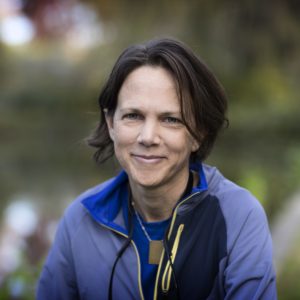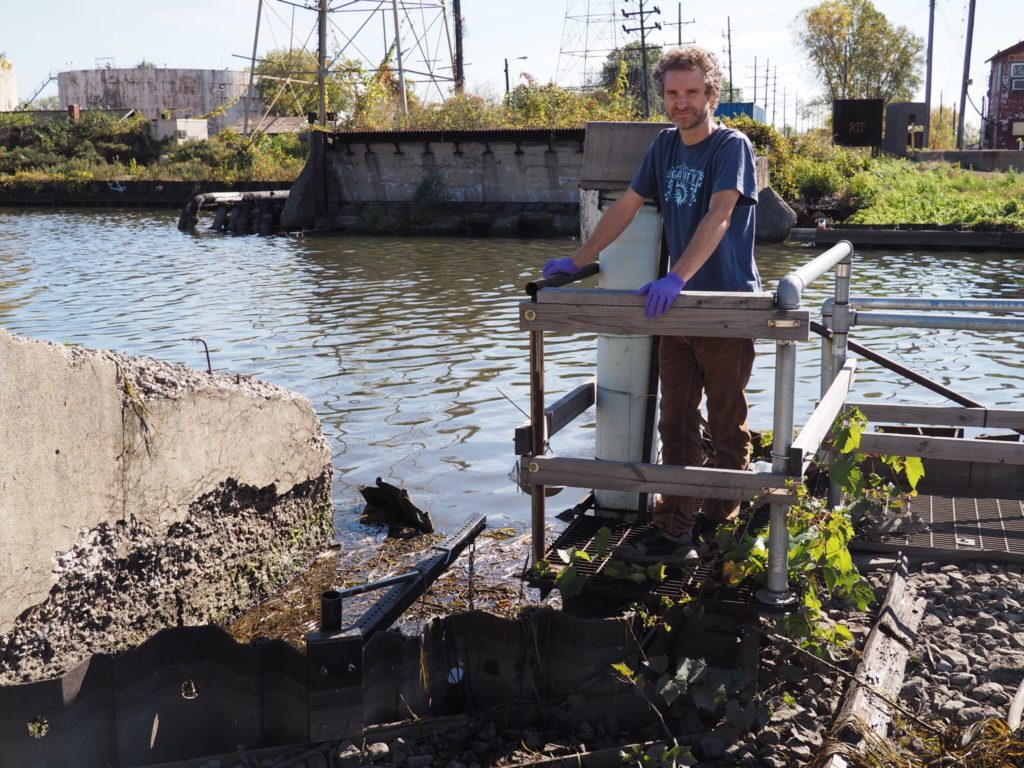 We are delighted to introduce our latest Environmental Science: Processes & Impacts Emerging Investigator, Ami Riscassi!
We are delighted to introduce our latest Environmental Science: Processes & Impacts Emerging Investigator, Ami Riscassi!
Ami received her B.S. in Mathematics from Wake Forest University (1996) and worked in Yosemite National Park for the next year where she decided to pursue a career which would allowed her to apply her analytical skills to supporting air and water resource management in National Parks. She returned to graduate school in 1997 for an M.S. in Environmental Engineering at the University of Virginia (UVA). After graduating in 1999, she worked as a fish/water quality research assistant with the National Park Service/USGS in Lake Clark National Park and as a physical science technician in Yosemite National Park. Ami spent the next 6 years (2000-2006) as a physical scientist within the USGS National Research Program, Water Resources Division, measuring and modeling the complex hydrologic system within Everglades National Park.
Knowing she wanted to work in forested/mountain systems as well as in her local environment, she returned to UVA to pursue her PhD in Environmental Sciences (2006-2011) conducting research within Shenandoah National Park, followed by 3-yrs as a post-doctoral researcher at Oak Ridge National Laboratory (2011-2014). In both PhD and post-doc positions, her research focused on determining the controls on mercury mobilization from the watershed to the stream ecosystem. Ami returned to UVA in 2014 to be a research scientists and Projects Coordinator for the Shenandoah Watershed Study. In this position, she maintains the long-term water quality monitoring program while pursuing additional research questions relevant to water resources in the western Virginia mountains.
Read her Emerging Investigators series article: “The effect of wildfire on streamwater mercury and organic carbon in a forested watershed in the southeastern United States” and find out more about her research in the interview below:
Your recent Emerging Investigator Series paper focuses on the effect of wildfires on streamwater mercury and organic carbon content. How has your research evolved from your first article to this most recent article?
One of my first articles as a graduate student assessed the instrumentation and methodology necessary to conduct automated high-flow stream sampling for trace-level mercury analysis. I then used those methods to evaluate the hydrologic and chemical controls on mercury transport in forested mountain streams. From those remote systems, contaminated from atmospheric Hg deposition, I moved to assessing controls on stream Hg transport in an industrially contaminated urban system and expanded on the prior work to evaluate organic (methyl mercury) as well as inorganic mercury. This most recent article was an application of what I had learned about stream Hg transport, but within the context of a large scale disturbance, fire. I was ‘lucky’ to be working within Shenandoah National Park when a relatively rare wildfire (for the Eastern U.S.) burned one of our study watersheds. It didn’t take long to search the literature and conclude that the impact of forest fire on streamwater Hg had not been assessed and we were in a unique position to quickly mobilize and conduct this study. I applied the methods developed in that first paper to this most recent study; it’s a nice feeling to continue citing one of your first papers throughout your career.
What aspect of your work are you most excited about at the moment?
I put some research on hold for the time sensitive post-fire Hg study that I am excited to return to now. I am evaluating the response/recovery of streams in Shenandoah National Park from historical acid deposition, within the context of different flow regimes. It’s a very unique data set (collecting high flow data in headwater streams for decades is labor intensive and not frequently done!) and I’m excited to finish up the analysis, write the manuscript and get this new piece of information out to the research and resource management community.
In your opinion, what is the biggest impact to aquatic ecosystems caused by elevated mercury and organic carbon?
Elevated inorganic mercury concentrations (what we measured in this featured study) have the potential to result in increased methylmercury concentrations, given the right environmental conditions and microbial community. Methylmercury is a neurotoxin that bioaccumulates in higher order predators, like fish, that humans eat. The global community is making efforts to reduce mercury in the environment due to the negative health implications, including the U.S. (see MATS standards, https://www.epa.gov/mats). Quantifying the contribution of Hg to streamwater from unregulated sources, such as wildfire, is important to accurately assess global budgets as well as the potential for changes in methylmercury in local streams.
What do you find most challenging about your research?
Communicating research findings succinctly in papers. I tend to want to write about every detail of the methods, analysis, and all my ideas of what the results may mean. I always end up writing way too much initially, but then take a few steps back, and return to it (many, many times) from the perspective of a fellow scientist not involved in the project. With that approach, I am ultimately able to sculpt it down to something that is more useful and relatively concise.
In which upcoming conferences or events may our readers meet you?
You’ll have to come to the University of Virginia or Shenandoah National Park! I was just at the International Conference on Mercury as a Global Pollutant this past summer and will hopefully be attending the fall AGU meeting in 2018.
How do you spend your spare time?
Trail running, dog walking, reading (just finished Lab Girl by Hope Jahren, wonderful book), and volunteering with the local collie rescue. Vacations are usually backpacking adventures with my former grad school lab-mates.
Which profession would you choose if you were not a scientist?
Can I just pick another type of scientist? I think being a wildlife biologist or entomologist would be pretty spectacular. If pressed, perhaps I could be a Resource Manager with a National Park or National Forest.
Can you share one piece of career-related advice or wisdom with other early career scientists?
From my personal experience (see my bio), I would point out that there is no one path to becoming a scientist. Pursue the ideas/places/environments/collaborations that interest you from the start and you’ll be led down a path where you enjoy your work and your life.











